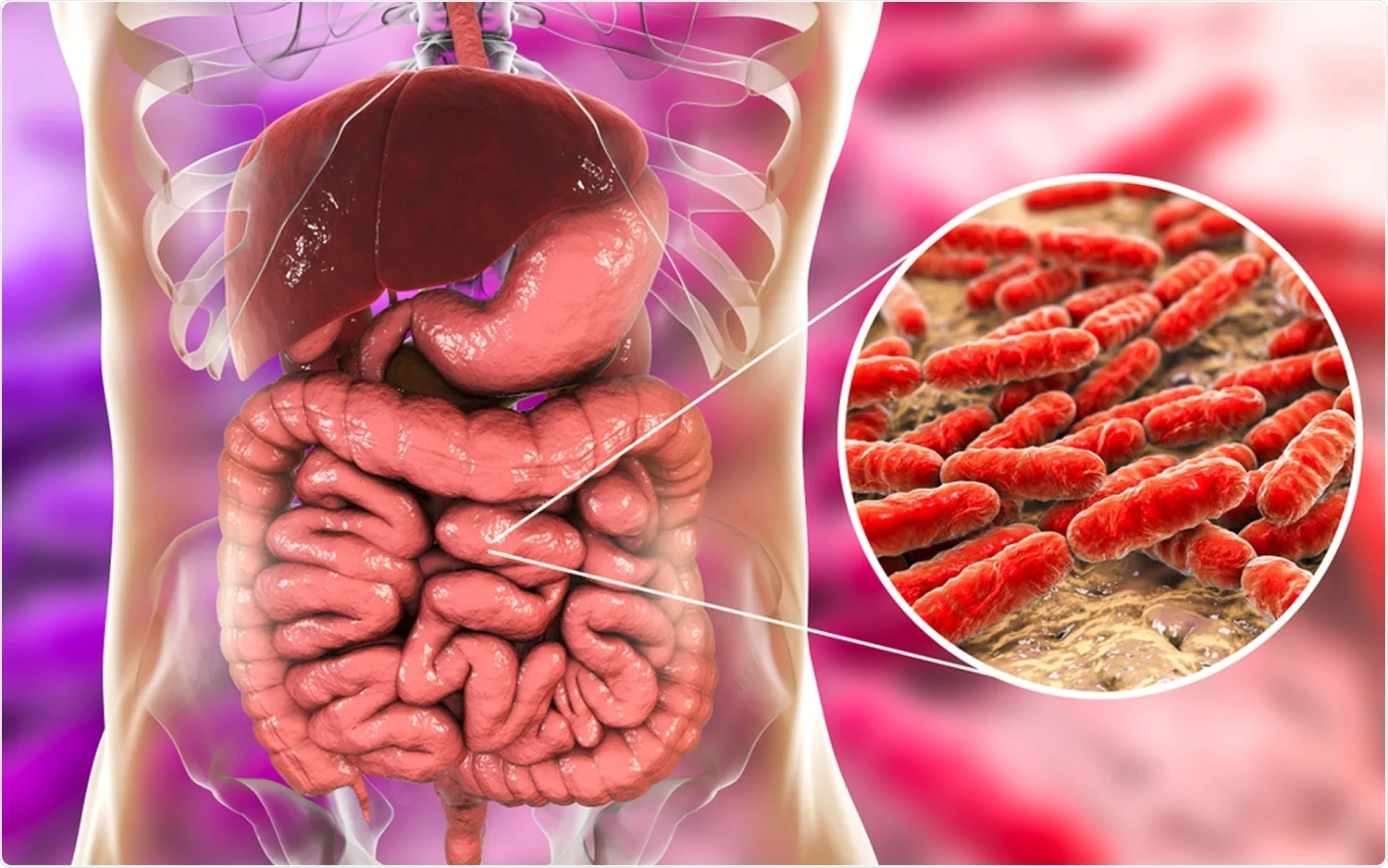Suboxone, used to treat opioid addiction, can impact gut health. In this article, we will explore gut health and Suboxone: what to know about how Suboxone affects the gut, common digestive issues, and tips for managing them to enhance overall treatment outcomes.
Key Takeaways
- Suboxone can negatively affect gut health by causing common side effects like constipation and nausea due to its opioid component, buprenorphine.
- Maintaining gut health is crucial during Suboxone treatment, as it influences medication effectiveness and can help mitigate withdrawal symptoms and reduce relapse risks.
- Dietary adjustments, hydration, and regular exercise are essential strategies for managing digestive issues and promoting overall gut health in individuals on Suboxone.
Does Suboxone affect gut health?
Suboxone, a medication used to treat opioid addiction, can significantly impact gut health. One of the primary ways it interferes with gastrointestinal function is through its opioid component, buprenorphine, which acts as an opioid antagonist. Suboxone acts by interacting with opioid receptors in the intestines, leading to slowed digestion and increased fluid absorption, which contributes to constipation. This interference with normal gastrointestinal function is a common side effect of Suboxone treatment.
In addition to constipation, taking Suboxone can also lead to nausea and stomach discomfort. These symptoms are more likely to occur if the medication is taken on an empty stomach. Consuming food prior to dosage can help mitigate these effects. Despite being uncomfortable, these gastrointestinal issues typically do not indicate serious health problems.
Patients undergoing Suboxone treatment often experience these digestive side effects, which can be managed with over-the-counter medications and dietary adjustments. Understanding how Suboxone interacts with the gut can help individuals and healthcare providers develop strategies to minimize discomfort and improve overall treatment outcomes.

Why is gut health important during Suboxone treatment?
Gut health is vital during Suboxone treatment for several reasons:
- A well-functioning gut microbiome can influence the effectiveness of the medication and the overall recovery process.
- The gut microbiota plays a significant role in reducing inflammation and improving immune response, which may be compromised in individuals undergoing opioid treatment.
- Disruptions in gut health can exacerbate withdrawal symptoms.
- Poor gut health can contribute to relapse risks during Suboxone therapy.
The gut microbiota also produces metabolites that influence neurotransmitters, potentially affecting mood and cravings in individuals on Suboxone. Poor gut function can worsen fatigue, cravings, and depression, making it harder to adhere to the treatment plan. Maintaining gut health can help mitigate these issues, leading to better treatment outcomes and a smoother recovery process.
Additionally, a healthy gut microbiome may enhance the efficacy of Suboxone by promoting better absorption of the medication. This can lead to reduced side effects such as nausea and constipation and improve overall well-being during treatment. Therefore, prioritizing gut health is essential for individuals undergoing Suboxone treatment.

Common digestive side effects of Suboxone
Patients undergoing Suboxone treatment commonly experience digestive issues such as nausea and constipation. These gastrointestinal symptoms are often considered typical reactions to starting Suboxone use, which includes a naloxone component and Suboxone film, and can be worsened by certain Suboxone interactions with other medications or substances. It is important to be aware of suboxone interactions that may occur.
In the following subsections, we will delve into the specifics of these side effects, including constipation, nausea, stomach discomfort, appetite changes, and bloating.
Constipation
Constipation is one of the most frequently reported side effects of Suboxone, caused by the medication’s opioid properties. Buprenorphine, an active ingredient in Suboxone, slows down intestinal contractions and increases fluid absorption in the intestines, leading to constipation. This condition, known as opioid-induced constipation (OIC), is prevalent among Suboxone users and explored further in our guide on does Suboxone causes constipation, where comparisons with other opioids are discussed.
The depressant effects of buprenorphine and naloxone significantly slow the movement of food through the gastrointestinal tract, which can exacerbate feelings of nausea and lead to vomiting. Managing constipation is crucial for improving comfort and overall treatment adherence.
Strategies to alleviate constipation include dietary adjustments, increased hydration, and the use of the most otc stool softeners.
Nausea and stomach discomfort
Nausea and stomach discomfort are common side effects of Suboxone, particularly when the medication is taken on an empty stomach. Many individuals experience nausea when they first start taking Suboxone due to its opioid content, which can irritate the stomach. The presence of residual opioids in the body when beginning Suboxone can also precipitate withdrawal symptoms, including nausea.
To mitigate nausea, consider the following recommendations:
- Eat light snacks before taking the medication.
- Lower or split the Suboxone dose to help reduce nausea for some patients.
- If lifestyle adjustments are ineffective, medications like Ondansetron may be prescribed to manage nausea. You can also explore more practical strategies for how to stop nausea from Suboxone in our detailed guide. Additionally, monitoring the suboxone dosage can be beneficial. It is important to consult a healthcare professional who can prescribe suboxone if necessary.
Appetite changes or bloating
Some users may experience changes in appetite or bloating as a response to Suboxone. Buprenorphine can alter appetite and sometimes lead to bloating due to its effects on gut motility. These changes can result in a sensation of fullness or distension in the stomach, which may diminish food intake and lead to weight fluctuations.
Individuals on Suboxone may notice variations in their eating habits, experiencing either increased or decreased appetite. Bloating is a common side effect of Suboxone, as the medication may slow down digestion and cause discomfort in the abdominal area. The effects of suboxone may have on appetite can vary from person to person. If you take suboxone, it’s important to monitor these changes.
Managing these symptoms involves dietary adjustments and monitoring food intake to ensure proper nutrition, especially since appetite changes and bloating are among the common side effects of Suboxone.
How Suboxone alters the gut microbiome
Chronic opioid use, including Suboxone and other opioids, as well as full agonist opioids, can cause significant shifts in the gut microbiome, a known effect of long-term use of buprenorphine, leading to microbial dysbiosis. This imbalance in the microbial community can impact the balance of beneficial vs. harmful bacterial species. For instance, chronic use of Suboxone is associated with a reduced presence of beneficial gut bacteria such as Bacteroidetes.
These alterations in the gut microbiome can affect overall gut health and function, potentially influencing cravings, inflammation, and immunity. Decreased microbial diversity is another concern, which can further compromise gut health. Understanding these impacts is crucial for developing strategies to support gut health during Suboxone treatment.

Can poor gut health affect Suboxone's effectiveness?
Imbalances in gut health can hinder the overall effectiveness of Suboxone by affecting the absorption and metabolism of the medication. Dysbiosis, characterized by an abnormal microbiome, may influence the pharmacokinetics of Suboxone, potentially altering its therapeutic effects. Poor gut health can lead to increased intestinal permeability, which may affect the consistency of drug absorption in patients taking Suboxone.
Chronic gastrointestinal issues may result in heightened withdrawal symptoms in Suboxone patients due to suboptimal drug efficacy. Research suggests that the gut-brain axis plays a significant role in how substances like Suboxone interact with the body, linking gut health directly to treatment outcomes. Maintaining a healthy gut is, therefore, essential for maximizing the benefits of Suboxone treatment.
How to manage gut issues while on Suboxone
Managing gastrointestinal issues during Suboxone treatment requires a combination of dietary adjustments, lifestyle changes, and safe over-the-counter remedies. The following subsections will cover specific strategies for dietary support, over-the-counter options, and lifestyle tips to help manage digestive discomfort effectively.
Dietary strategies
Incorporating gut-supportive foods into your diet can significantly alleviate constipation and support the microbiome. Foods rich in fiber, such as fruits, vegetables, and whole grains, are essential for promoting healthy digestion. Additionally, staying well-hydrated by drinking plenty of water can enhance the effectiveness of a high-fiber diet and help prevent constipation.
Fermented foods and probiotics can also play a crucial role in maintaining gut health. These foods help restore the balance of good bacteria in the gut, which can be disrupted by Suboxone treatment. Including these dietary strategies in your daily routine can help manage gastrointestinal discomfort and improve overall well-being.
Safe over-the-counter remedies
Several over-the-counter solutions can help manage nausea and constipation during Suboxone treatment:
- Stool softeners like docusate
- Osmotic laxatives such as milk of magnesia
- Anti-nausea medications (consult a healthcare provider before starting any new medication)
Hydrating with water or electrolyte drinks can soothe the digestive system and alleviate nausea. Light snacks, such as crackers or bread, consumed before taking Suboxone can also reduce nausea. Consulting with a healthcare provider ensures that these remedies are used safely and effectively.
Exercise and lifestyle tips
Regular physical activity can help alleviate constipation by stimulating intestinal contractions and improving overall digestive health. Engaging in at least 30 minutes of moderate exercise daily can promote bowel motility and reduce nausea associated with Suboxone. Gentle exercises like walking or stretching are recommended to counteract nausea without overexerting oneself.
To manage nausea while on Suboxone, consider the following:
- Maintain hydration by drinking 8-10 cups of water each day.
- Incorporate relaxation techniques, such as deep breathing or meditation, to help reduce nausea symptoms.
- Establish a consistent routine to reduce stress, which may minimize nausea and other related symptoms.
When to talk to your doctor about digestive symptoms
It’s important to reach out to your healthcare provider if digestive issues like nausea or constipation become severe or persist for an extended period. Persistent or intense abdominal pain while on Suboxone warrants a discussion with your physician to rule out serious complications. Tracking digestive symptoms can help your doctor determine the best course of action.
If you experience gastrointestinal symptoms alongside other severe reactions, such as respiratory issues or a serious allergic reaction, seek immediate medical attention. Severe nausea can indicate precipitated withdrawal symptoms, signaling a need for urgent communication with your treatment team. Reducing withdrawal symptoms, including severe withdrawal symptoms and severe symptoms, can be addressed by consulting with a doctor to determine if anti-nausea medications are necessary for managing nausea that persists. Additionally, if you notice difficulty breathing, it is crucial to seek help right away. Allergic reactions may also require prompt medical intervention.
Bottom Line: Supporting your gut during Suboxone treatment
Maintaining gut health during Suboxone treatment is crucial for enhancing medication effectiveness and overall recovery. To support gut health:
- Incorporate high-fiber foods like peas, broccoli, and lentils to help alleviate constipation caused by Suboxone.
- Increase hydration to enhance the effectiveness of a high-fiber diet, helping to prevent constipation and support overall digestive health.
- Engage in regular physical activity, which promotes bowel movement and improves overall digestive well-being.
Using safe over-the-counter remedies, such as laxatives and anti-nausea medications, can provide relief from common digestive side effects. However, it’s essential to consult a healthcare provider for personalized strategies to manage digestive symptoms during Suboxone treatment. Prioritizing gut health can improve treatment outcomes and overall well-being.
FAQs about Suboxone and gut health
Can Suboxone cause long-term damage to the gut?
Long-term use of Suboxone may lead to gastrointestinal dysfunction, but conclusive evidence of lasting damage remains unclear. It is vital to monitor gut health and consult with healthcare providers for ongoing issues.
Are probiotics safe with Suboxone?
Probiotics are generally considered safe to use with Suboxone and may help alleviate digestive side effects. Consulting a healthcare provider for specific recommendations is advisable.
How can I manage constipation caused by Suboxone?
To effectively manage constipation caused by Suboxone, incorporate high-fiber foods, stay well-hydrated, and consider using safe over-the-counter remedies such as stool softeners. Regular physical activity can also enhance bowel function.
What should I do if I experience severe nausea while taking Suboxone?
If you experience severe nausea while taking Suboxone, it is important to consult your healthcare provider. Additionally, consuming light snacks before taking the medication and ensuring proper hydration may alleviate your symptoms.
Is gut health related to relapse risk during Suboxone treatment?
Poor gut health is indeed associated with higher relapse risk during Suboxone treatment. Therefore, focusing on dietary interventions and probiotics to improve gut health may play a crucial role in supporting recovery and lowering the chances of relapse.
















